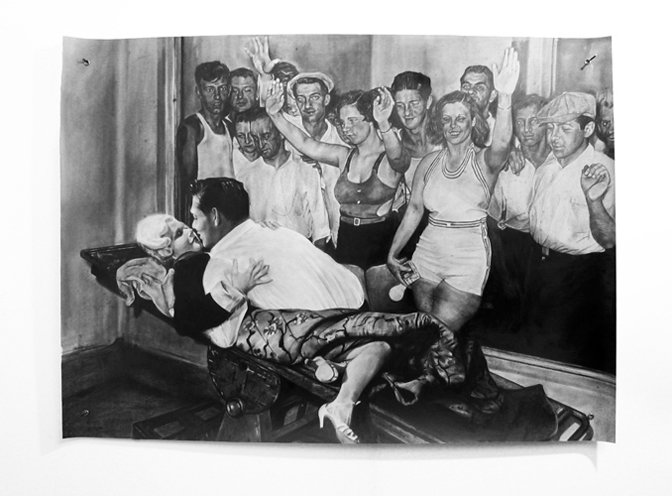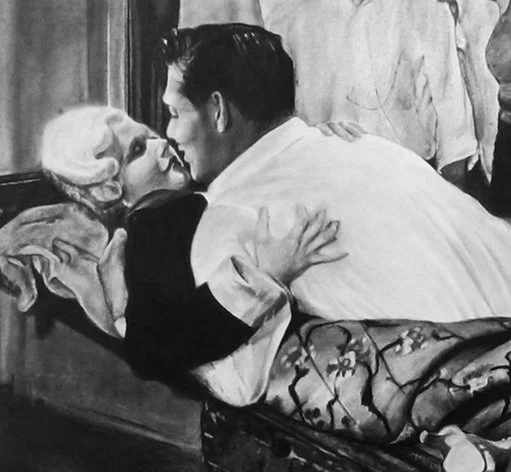-
In Clark and Jean two different scenes are collaged together to form a new, imagined scenario — a technique often employed by the artist. The work’s central composition is drawn from a press image of crowds gathered behind an observation glass, peering through to the morgue that housed the body of depression-era gangster John Dillinger. Spending months as a fugitive on the run and cannily evading his pursuants, Dillinger caught the public’s imagination as much as any film star of the era. He was ultimately captured and shot dead by police in July 1934, outside the Biograph Theater in Chicago. Soon afterwards, public demand led to the display of his corpse. Thousands lined up to view it and satisfy their morbid curiosity. For Fowler, this public appetite for morbid spectacle forms a mirror to today’s endless consumption of celebrity gossip. Here, she highlights the parallel by replacing the corpse of Dillinger with Clark Gable and Jean Harlow in a passionate embrace. The two were never a couple off-screen, but the public was so thrilled by their cinematic romance that they willed it to be a reality: Metro-Goldwyn-Mayer, the studio Gable and Harlow were signed to, orchestrated the façade they were real-life lovers to sustain high attendance at film screenings. Gable and Harlow found themselves harangued by scandals about their private lives, continuously seized upon by the press. In Fowler’s drawing, the glass seals off the seedy, drooling onlookers from the overlooked individuals at the centre, their fate no less sinister than Dillinger’s.
Featured in Measuring Elvis, 2015
Read further writing and essays in response to the subjects and themes relating to the work of Nina Mae Fowler here.

